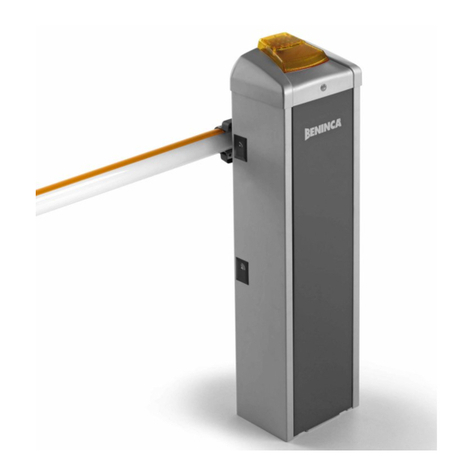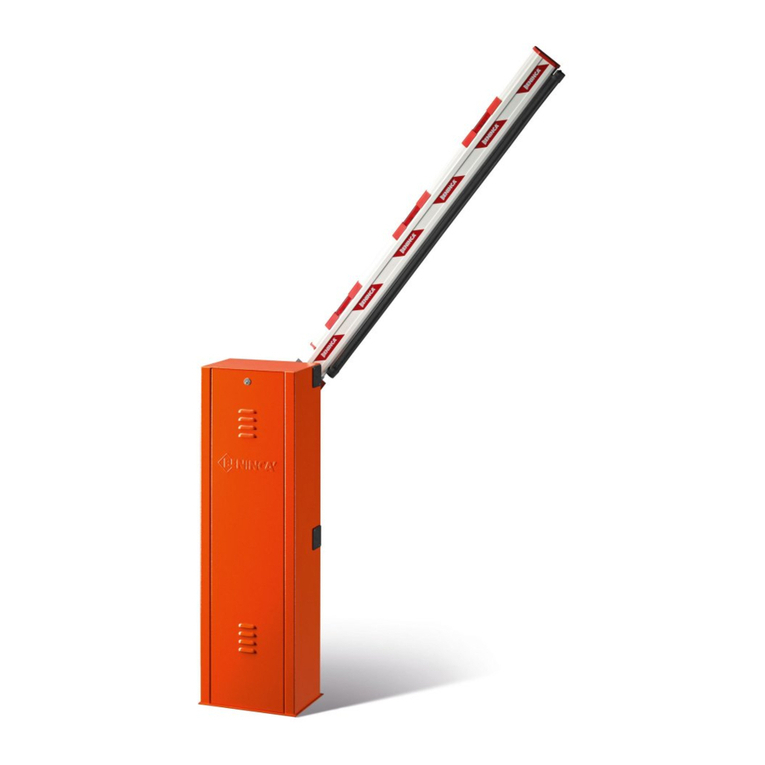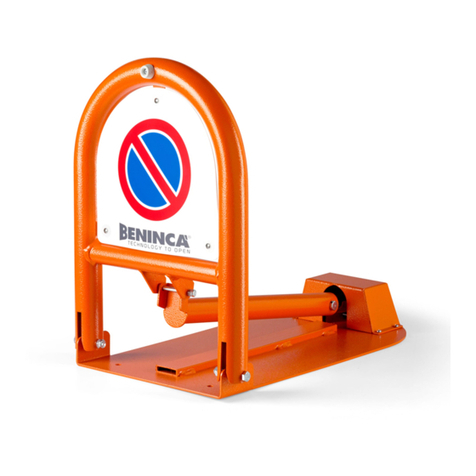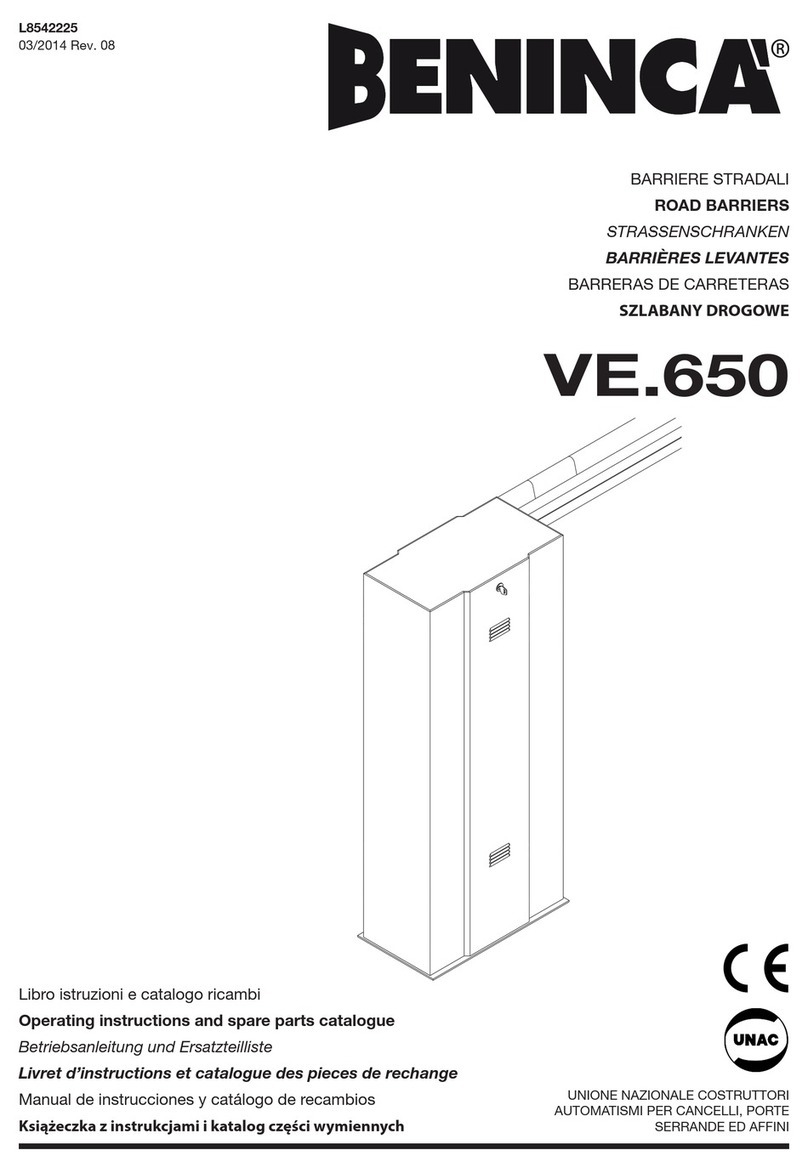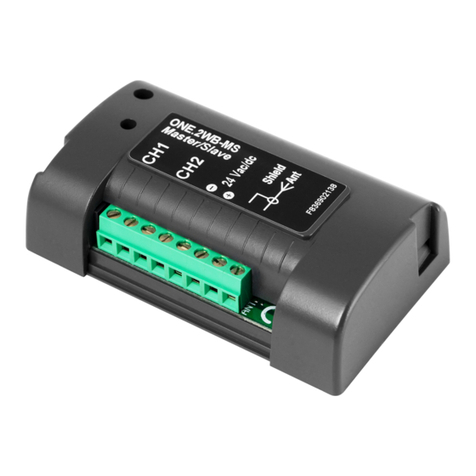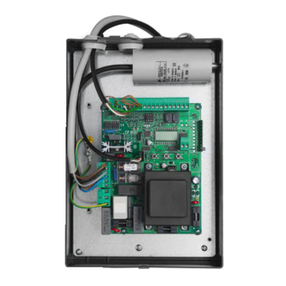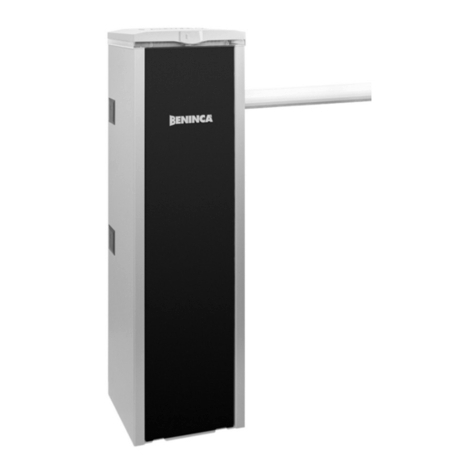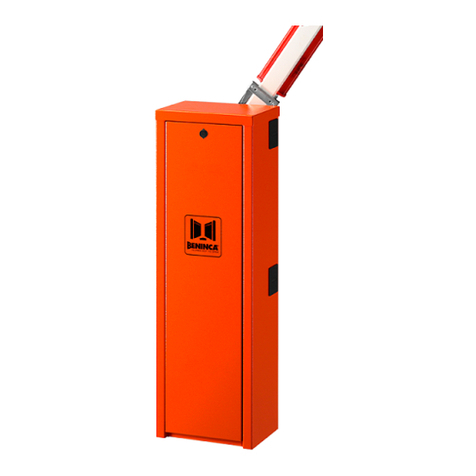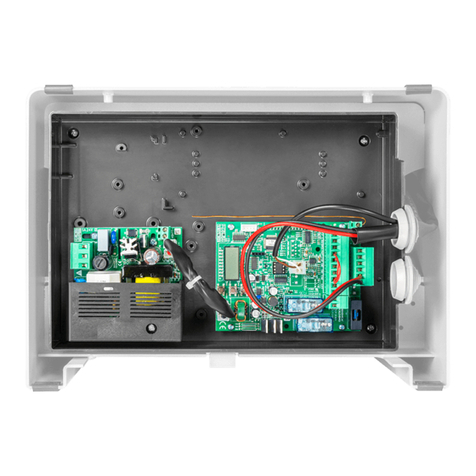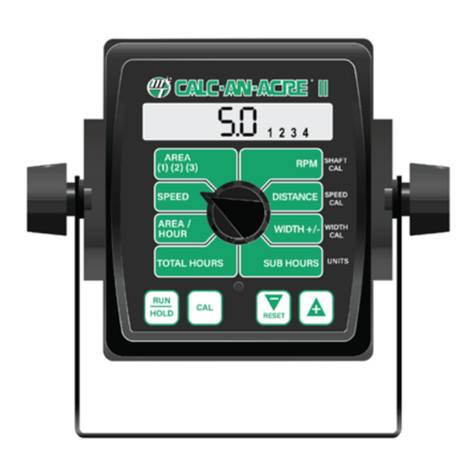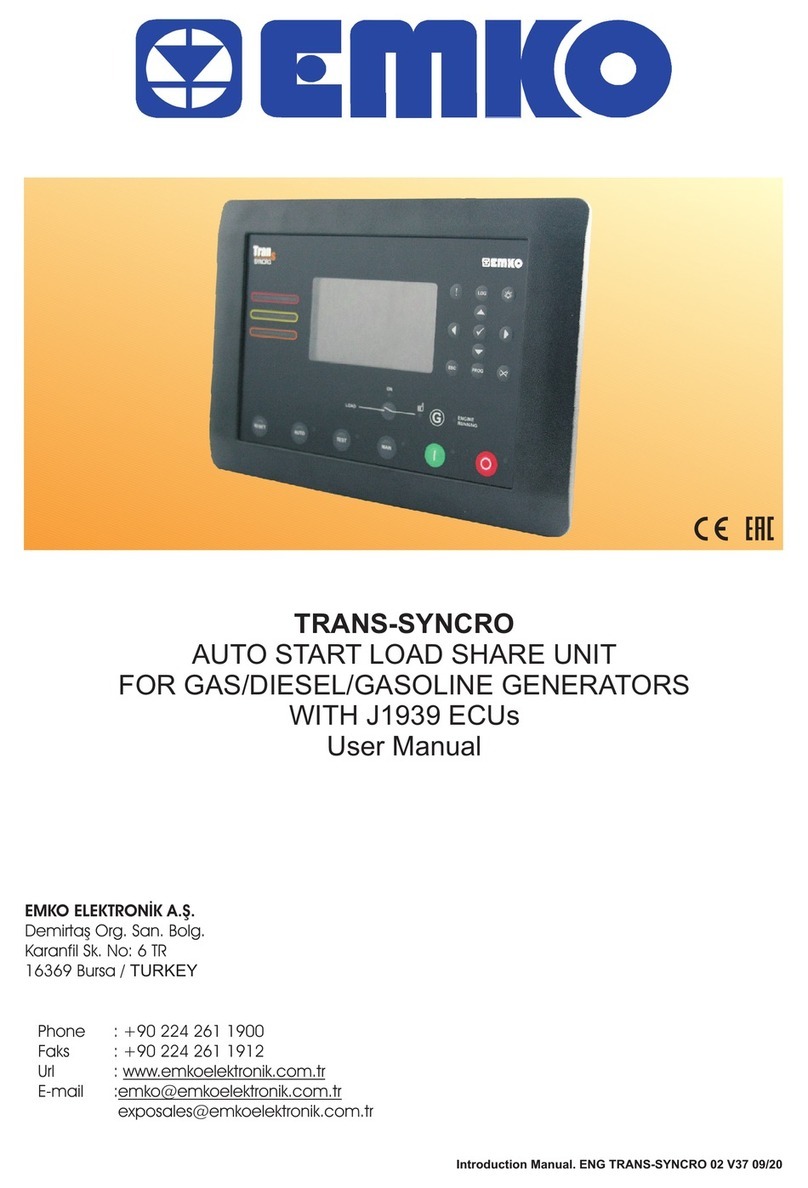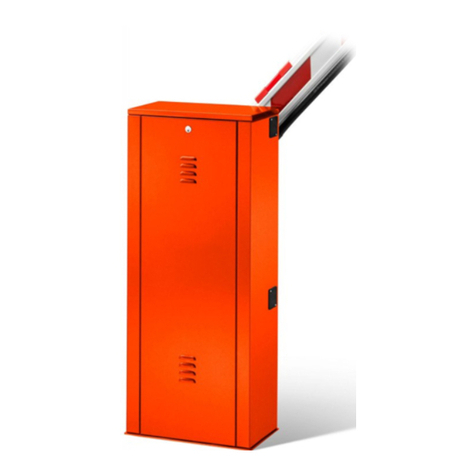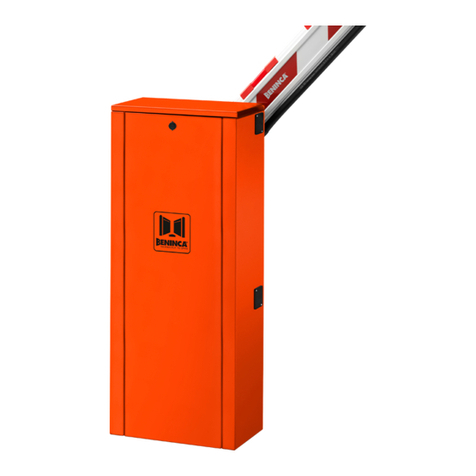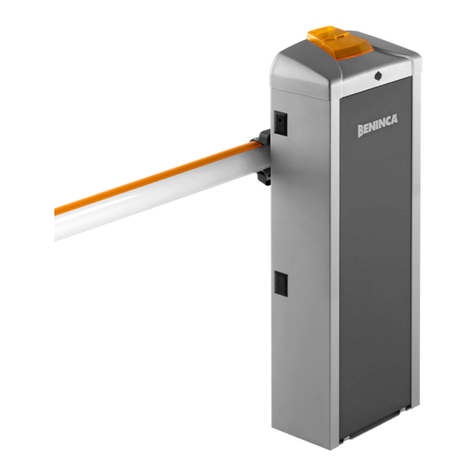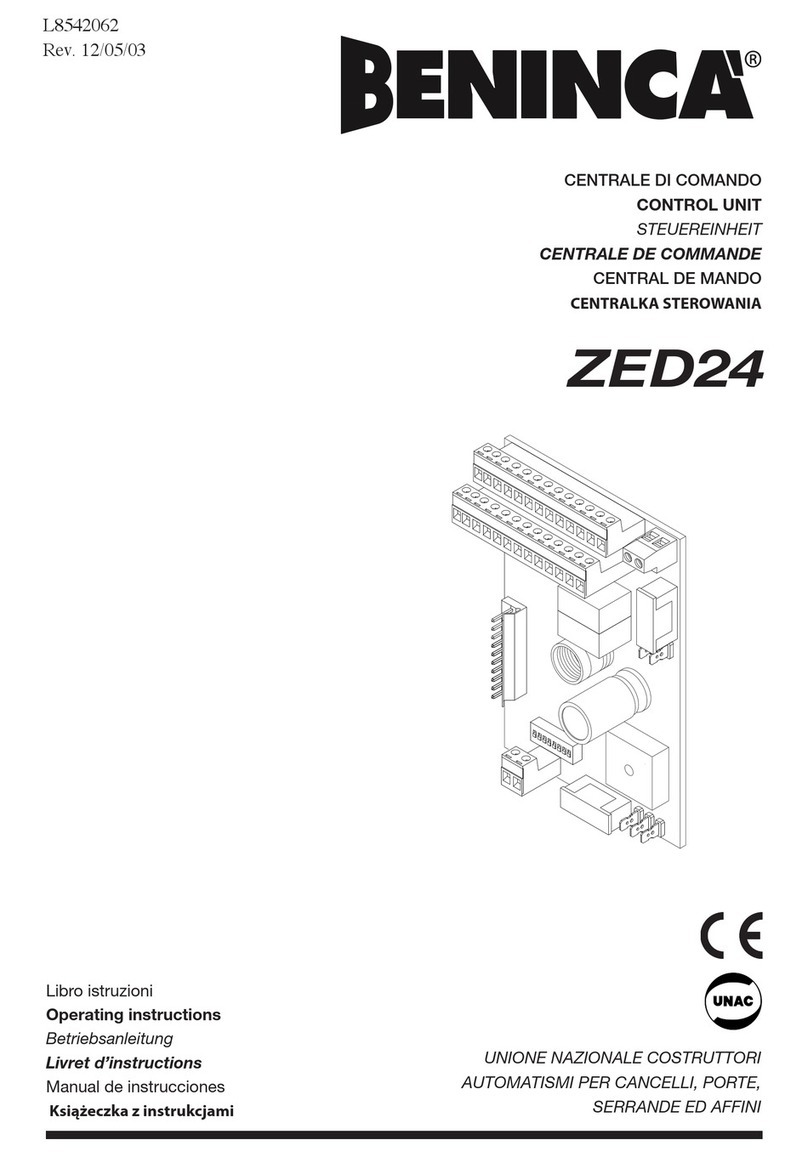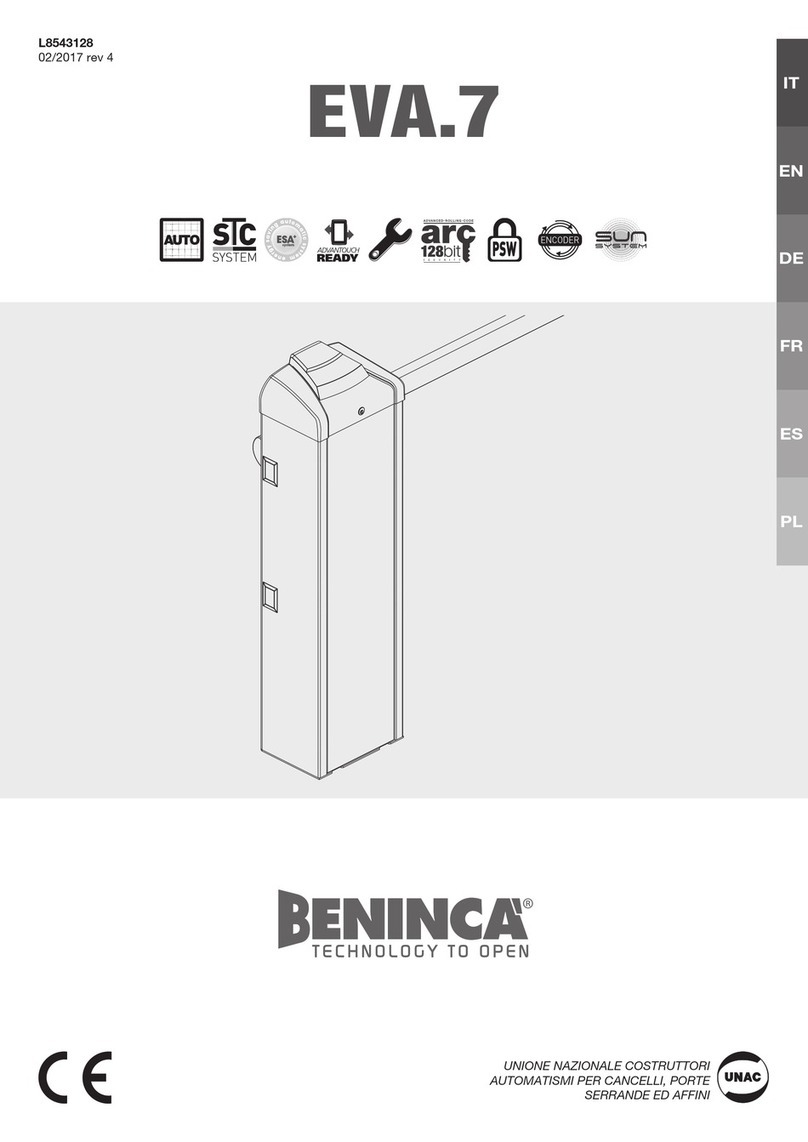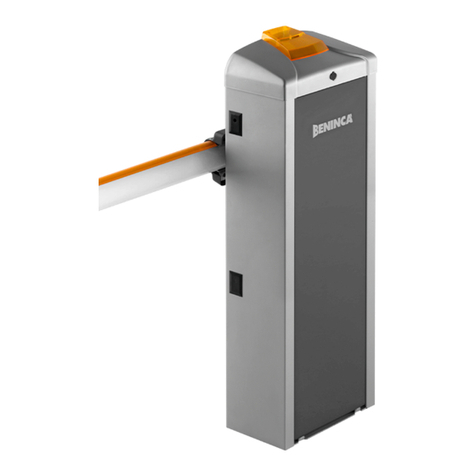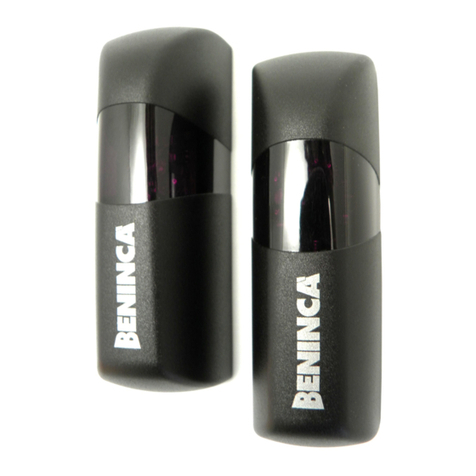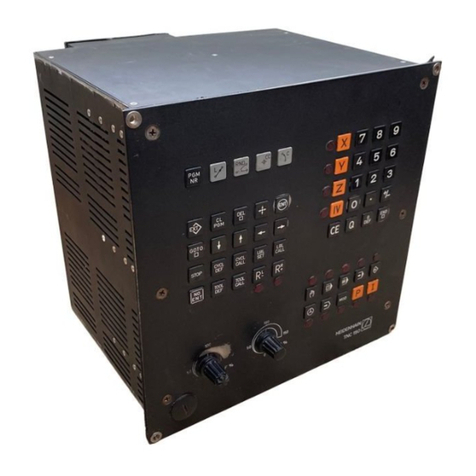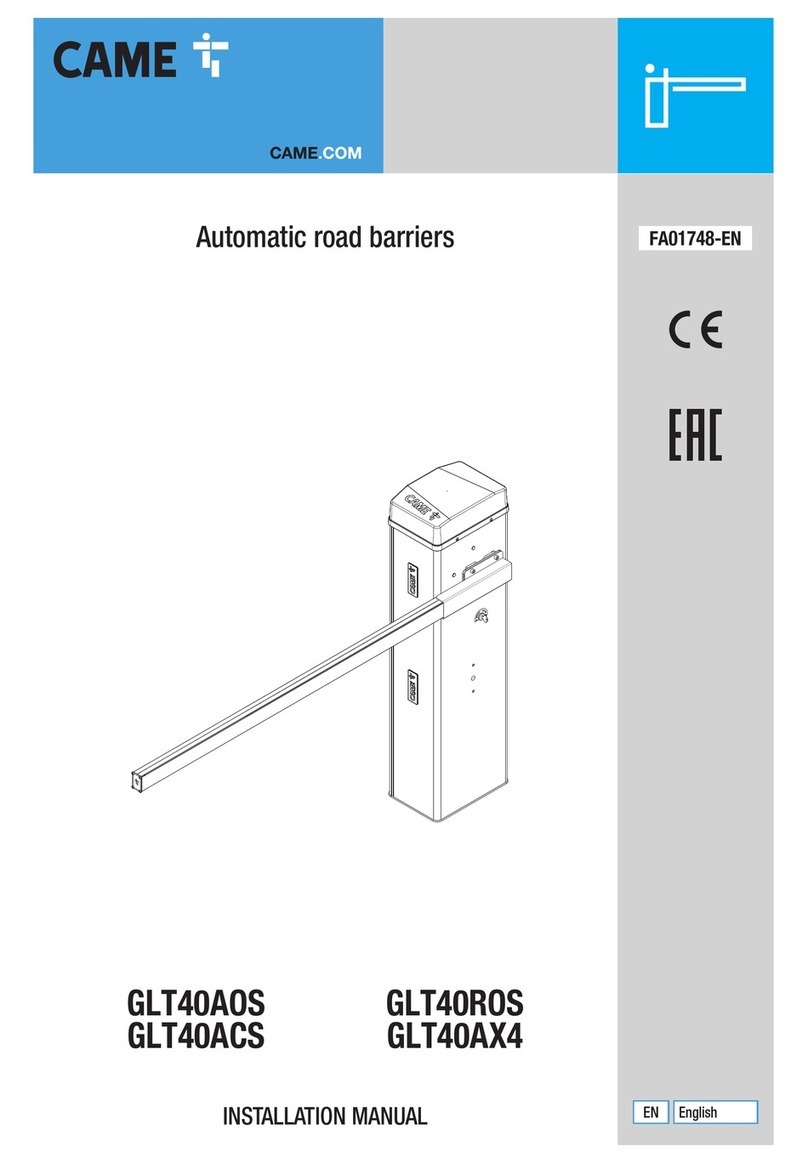Declaración CE de conformidad para maquinas
(Directiva 89/392 CE, Apartado II, parte B)
Prohibición de puesta en servicio
Fabricante: Automatismi Benincà S.r.l.
Dirección: Via Capitello, 45 - 36066 Sandrigo (VI) - Italia
Declara que: la automatización para barreras de calles VE.500
• está construída para ser incorporada en una máquina o para ser ensamblada con otras maquinarias para construir una máquina
considerada por la Directiva 89/392 CE, como modicada;
• no es, por consiguiente, conforme en todos los puntos a la posiciones de esta Directiva;
• es conforme a las condiciones de las siguientes otras Directivas CE:
Directiva de la baja tensión 73/23/CEE, 93/68/CEE.
Directiva de compatibilidad electromagnética 89/336/CEE, 93/68/CEE
y que
• han sido aplicadas las siguientes (partes/claúsulas de) normas armonizadas:
EN 55022, EN 61000-3-2, EN 61000-3-3, EN 50082-1, EN 60335-1.
además declara que no ha permitido poner en servicio la maquinaria hasta que la máquina en la cual será incorporada o de la cual
resultará componente esté identicada y no sea declarada la conformidad a las condiciones de la Directiva 89/392 CE y a la legislación
nacional que le corresponda, vale decir, hasta que la maquinaria correspondiente a la presente declaración no forme un conjunto único
con la máquina nal.
Benincà Luigi, Responsable legal.
Sandrigo, 02/11/2004.
Deklaracja UE o zgodności z normami dla maszyn
(Wytyczna 89/392 UE, Załącznik II, Część B)
Zakaz użytkowania
Producent: Automatismi Benincà S.r.l.
Adres: Via Capitello, 45 - 36066 Sandrigo (VI) - Italia
Oświadcza że: Automatyzm do szlabanów drogowych model VE.500
• został opracowany z myślą o wbudowaniu go do maszyny lub zmontowania z innymi urządzeniami w celu skonstruowania maszyny
uznanej przez Wytyczną 89/392 UE, za zmodykowaną;
• nie jest więc zgodny we wszystkich punktach z Wytyczną;
• jest natomiast zgodny z wymogami innych, poniżej wyszczególnionych, Wytycznych UE:
Wytyczna o niskim napięciu 73/23/EWG i 93/68/EWG
Wytyczna o zdolności współdziałania elektromagnetycznego 89/336/EWG, 93/68/EWG.
i że:
• zastosowane zostały następujące normy (ich klauzule/części) standard:
EN 55022, EN 61000-3-2, EN 61000-3-3, EN 50082-1, EN 60335-1.
ponadto oświadcza, że zabronione jest stosowanie automatyzmu do czasu kiedy maszyna, do której ma być wbudowany lub stanowić
jej element składowy, nie uzyska świadectwa identykacyjnego oraz świadectwa orzekającego jej zgodność z wymogami Wytycznej
89/392 UE oraz z przepisami obowiązującymi w kraju sprowadzającym urządzenie, a więc do czasu kiedy automatyzm stanowiący
przedmiot niniejszego oświadczenia nie stanie się częścią składową urządzenia gotowego.
Benincà Luigi, Radca prawny
Sandrigo, 02/11/2004.
